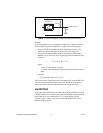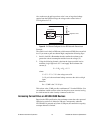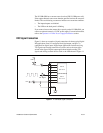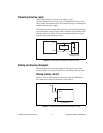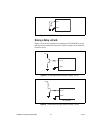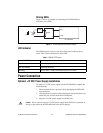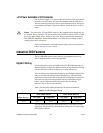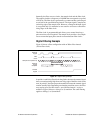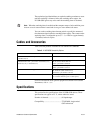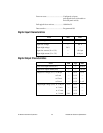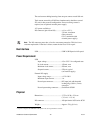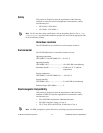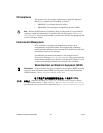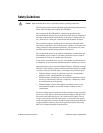
NI 6509 User Guide and Specifications 22 ni.com
Programmable Power-Up States
At power-up, the output drives on the NI USB-6509 are disabled. All lines
are user-configurable for high-impedance input, high output, or low output.
User-configurable power-up states are useful for ensuring that the
NI USB-6509 powers up in a known state.
To use MAX (recommended) to program the power-up states, select
the device and click the Properties button. Refer to the software
documentation for information about how to program the power-up states
using NI-DAQ with LabVIEW or other National Instruments application
development environments (ADEs).
Note Using the programmable power-up states feature overrides the state configured
using the I/O pull-up/pull-down switch.
Change Detection
You can program the NI USB-6509 to send an interrupt when a change
occurs on any input line.
The NI USB-6509 can monitor changes on selected input lines or on all
input lines. It can monitor for rising edges (0 to 1), falling edges (1 to 0),
or both. When an input change occurs, the NI USB-6509 generates an
interrupt, and the NI-DAQ driver then notifies the software.
Note Excessive change detections can affect system performance. Use digital filtering to
minimize the effects of noisy input lines.
The NI USB-6509 sends a change detection when any one of the changes
occurs, but it does not report which line changed or if the line was rising or
falling. After a change, you can read the input lines to determine the current
line states. The maximum rate of change detection is determined by the
software response time, which varies from system to system.
An overflow bit indicates that an additional rising or falling edge has been
detected before the software could process the previous change.
Refer to the software documentation for information about how to set up
and implement the change detection.



